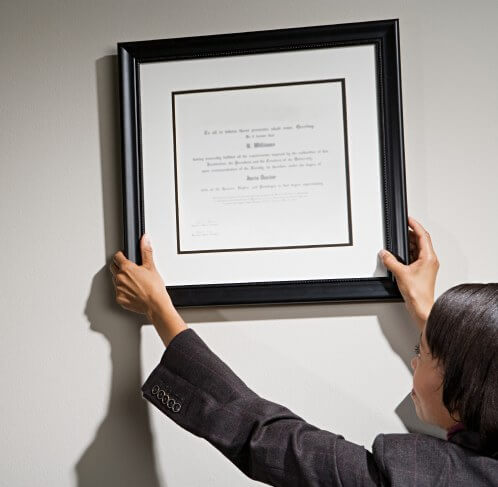Setting the cost and look of a matboard aside, here are the benefits of using a matboard.
The matboard has three significant jobs when it comes to looking after your art;

Physical Barrier:
The most important thing a matboard does to protect your art is create a physical barrier between it and the glass. It holds the artwork off the glass so the photo or print doesn’t stick. Some artworks are more susceptible to sticking to the glass than others. A good rule of thumb is to think about how much water was used in creating the art. A photo developed in water can easily become “reactivated” when moist. However, a print on mat paper without high saturation is less likely to have problems.
Air-pocket:
Glass is a poor conductor of heat, so it can’t keep up when the temperature changes rapidly. The glass fogs up as it stays cool while the air around it is hot. The fog is tiny droplets of water in the air. When you have a matboard, you create a small pocket of air between the glass and the artwork, and this gives those droplets somewhere to be. Without this air pocket, the moisture is absorbed straight into the paper of your art, eventually damaging the paper. Adding a matboard creates a little air pocket that helps with air circulation and makes the liquid dissipate more effectively.
Absorbs moisture:
If there is so much moisture that it can’t dissipate in the small air pocket, it will attach itself to the matboard touching the glass. Essentially, the matboard is sacrificing itself for the artwork. Over time, you may see the bevel of your matboards turn yellow. This indicates they’re full of moisture and can no longer receive more liquid. Take it to Frame Warehouse, and we can replace the matboards for you.
Alternatives to using a matboard include:
Using a glass spacer:
If you don’t want to use a matboard, a glass spacer is often used instead. A glass spacer is a tiny piece of plastic (usually transparent) that runs between the glass and the print in the rebate of the frame. It isn’t easy to see and gives that matless look while still providing some benefit in certain situations.
A glass spacer has pros and cons:
Physical Barrier;
Yes. It holds the glass off the artwork
Air-pocket;
Yes. It creates an air pocket, encouraging the moisture to dissipate.
Absorption;
No. It doesn’t absorb moisture. Excessive moisture will run down the glass and into the rebate of the frame, making contact with the artwork.
Other risks;
You’ll need to mount the item to the backing board, which is not easily reversible and can damage it (I’d like you to see our blog on hinging vs. mounting).
NEITHER a matboard nor a glass spacer;
So now ask yourself:
Physical barrier:
Does it matter that I don’t have a physical barrier? Is this photo or print likely to stick (how much water was used in making it)?
Air-pocket & Absorption:
Does it matter that I don’t have an air pocket? Will there be rapid temperature changes where I hang my art? Is it hanging below an air conditioning vent or in direct sunlight? Is it in a bathroom or kitchen?
Does it matter:
Is my item irreplaceable? Can I reprint my photo if it sticks to the glass? Is it a fashion print for decorative purposes? Do you expect it to last more than a decade?
I hope that gives you an overview of why matboards can be important and when it is okay to forgo them. I believe art is personal and for your enjoyment, and I will always encourage you to enjoy your art in a way that pleases you.
Frame Warehouse offers obligation-free framing consultations at two locations: Ashgrove and Capalaba.